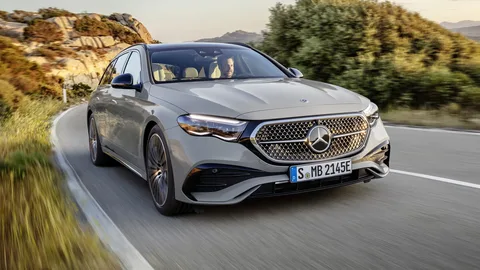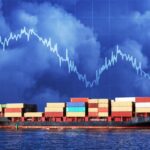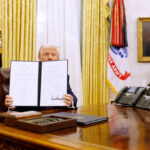Two of the best-known car manufacturers, Mercedes-Benz and Stellantis, have unceremoniously scrapped their 2025 profit guidance in a move that has set the automotive industry abuzz with turmoil and investors worried about global trade stability, especially between the European Union and China. The tariff uncertainty affects even heavyweights like Mercedes-Benz and Stellantis to forge a comfort zone in predicting future earnings, production targets, and supply chain strategies, which have currently become the major discussion issues in the entire automotive industry.
Today, the whole setup looks weak, with tariff uncertainty casting a long shadow on innovation, expansion, and consumer pricing. Analysts have already highlighted the announcements from Mercedes-Benz and Stellantis as key moves, likely to be followed by some others from major automotive industry players.
More Read: Tesla vs Slate Auto: The Battle That Will Redefine the Electric Vehicle Market in 2025
Tariff Uncertainty Forces Mercedes-Benz and Stellantis to Act
Both Mercedes-Benz and Stellantis are coming to terms with tariff uncertainty that are growing each day, driven particularly by the new import duties that might affect their cross-border trading abilities, especially with China. The Mercedes-Benz executives emphasized that the surrounding tariff uncertainty is affecting their ability to export electric vehicles, one of their priorities for future growth.
Stellantis, meanwhile, conceded that their global footprint is particularly vulnerable in times of such policy shifts. Tariff uncertainty poses a serious obstacle to long-term planning for both companies given their expansive network of several production and export hubs. Withdrawal of profit guidance, for either company, was not a matter of choice but of necessity thrust upon them by the rapidly evolving geopolitical and economic situation in the automotive industry.
Market observers argue that 2025 might prove to be a transition year for business model restructurings throughout the automotive industry, notably for large concerns like Mercedes-Benz and Stellantis.
Financial and Strategic Fallout from Profit Guidance Withdrawal
The withdrawal of profit guidance by both Mercedes-Benz and Stellantis produced immediate effects in the financial markets. Market shares fell sharply, and investor sentiment turned cautious. Analysts suggested that tariff uncertainty might heighten operating costs and curtail demand from consumers through prospective price increases.
To make matters worse, both Mercedes-Benz and Stellantis have placed large bets on electric vehicles. With tariff uncertainty growing, one more wrench in the system is the unpredictable supply situation of the key components for EVs, many of which originate from Asia. Thus, the automotive industry may now incur delays in its electrification targets.
Both by virtue of Mercedes-Benz and Stellantis have assured their stakeholders of their commitment to transparency and to make quick decisions. Strategic planning would involve potentially realigning production bases and revisiting pricing models to offset the tariff uncertainty. The firms’ abrupt departure from profit guidance symbolizes a more sweeping reexamination within the automotive industry.
Also Read: Trump Car Tariffs: How America’s Auto Industry is Bracing for Impact in a Globalized World
Industry-Wide Impact and the Road Ahead
The implications are actually far-reaching for Mercedes-Benz and Stellantis. Experts argue that several other automotive industries are also quietly revising profit guidance, export commitments, and supply dependency during the lingering tariff-related uncertainty, which drives firms into a more localized way of thinking regarding potential assembly shifts into end markets.
This could set in motion changes to the fabric of the automotive industry. Innovative thrusts may slow if like Mercedes-Benz and Stellantis have had to reroute research and development funds towards meeting trade-linked costs. Further compounding this unpredictability is the fact that tariff ambiguity affects component sourcing, which can accordingly disrupt production and the availability of vehicles in various regions.
Analysts like Katie Martin and John Plender have said that the current tariff uncertainty is a “fog” obscuring visibility into any strategic forecasts. They argue that until diplomatic or regulatory clarity is achieved, companies like Mercedes-Benz and Stellantis may continue to revise or even retract forward-looking statements such as profit guidance.
The unfolding event will maintain high drama for trade between the EU and China. Outcomes on that front could either mitigate or widen the present tariff uncertainty, largely reshaping the respective strategies of Mercedes-Benz, Stellantis, and their genetically related cousins within the automotive industry.
Seeking Stability Amid Growing Uncertainty
The preventive declaration by Mercedes-Benz and Stellantis for withdrawing the 2025 profit guidance is more than just an entry of economic reports-it serves as a warning bell to the worldwide automobile industry. Tariff uncertainty has proven to be an internal management problem that needs constant reassessment and flexibility, not just an external risk.
Even the industry giants like Mercedes-Benz and Stellantis cannot escape the shroud of change in between their companies until more stable and predictable trade frameworks are established. Their experiences hold a significant lesson for the whole automotive industry: adaptability and foresight are not options or luxuries anymore; they are survival tools.
As the world watches trading talks unfold and markets react, clearly, the golden age of easy forecasting is gone. Now in such an era of increasing tariff uncertainty, leading in technology will not suffice for the likes of Mercedes-Benz and Stellantis to stay ahead of the game in the automotive industry; they have to become either a consultant or an educator themselves in how companies can manage industrial relations amid complex geopolitical terrains.






